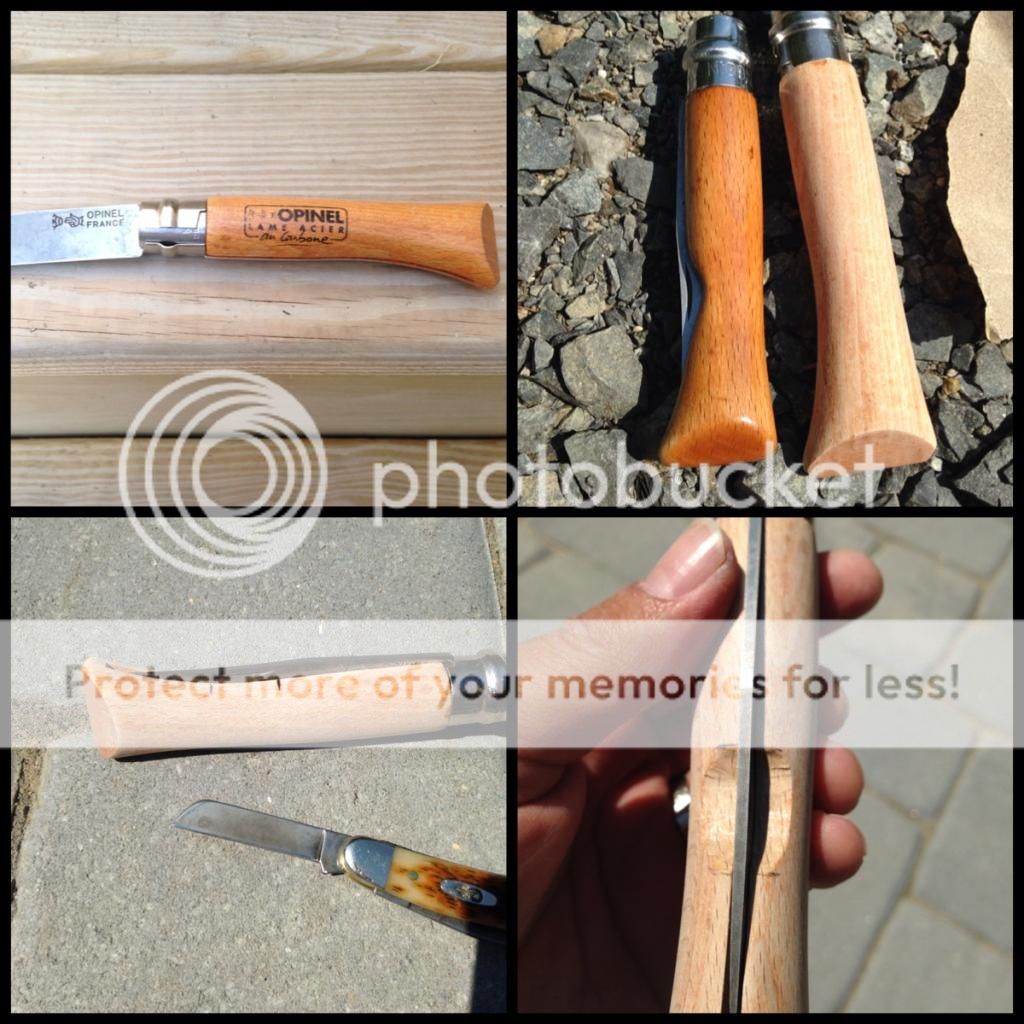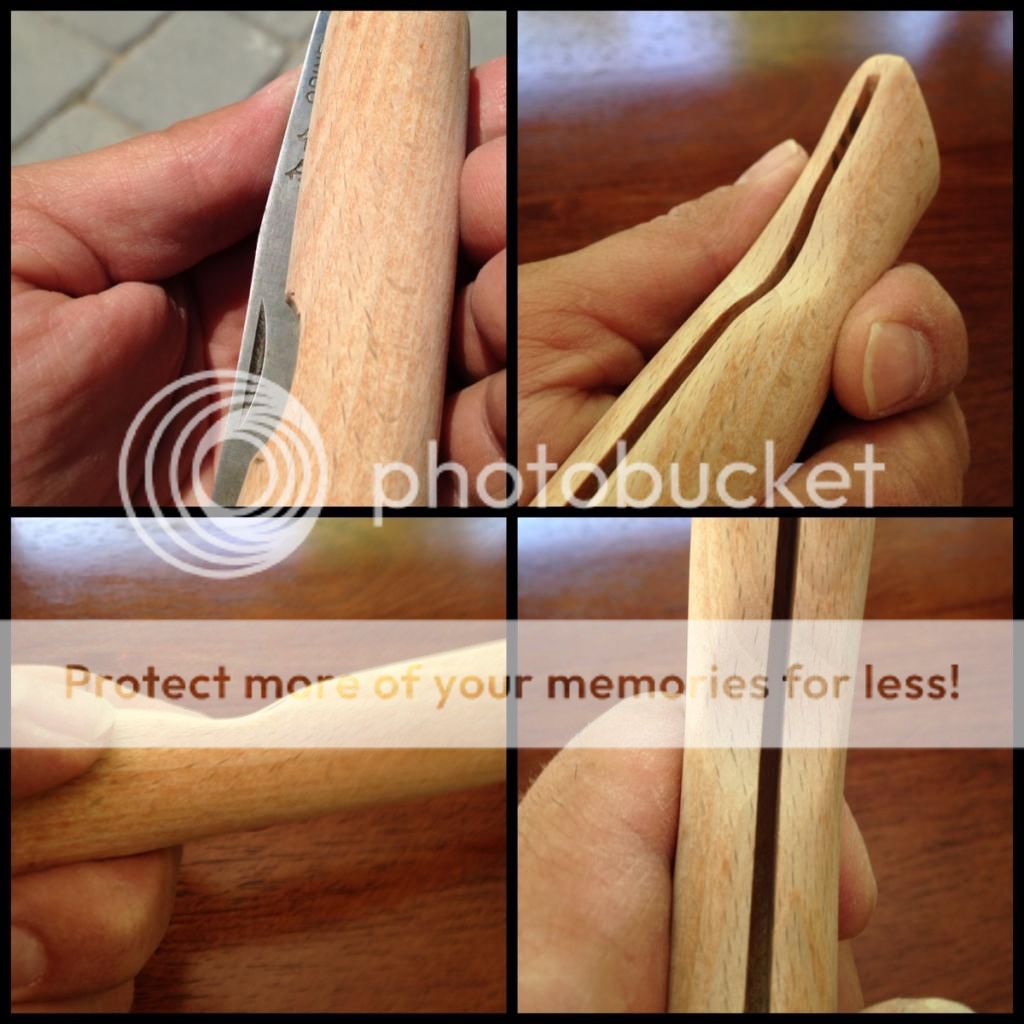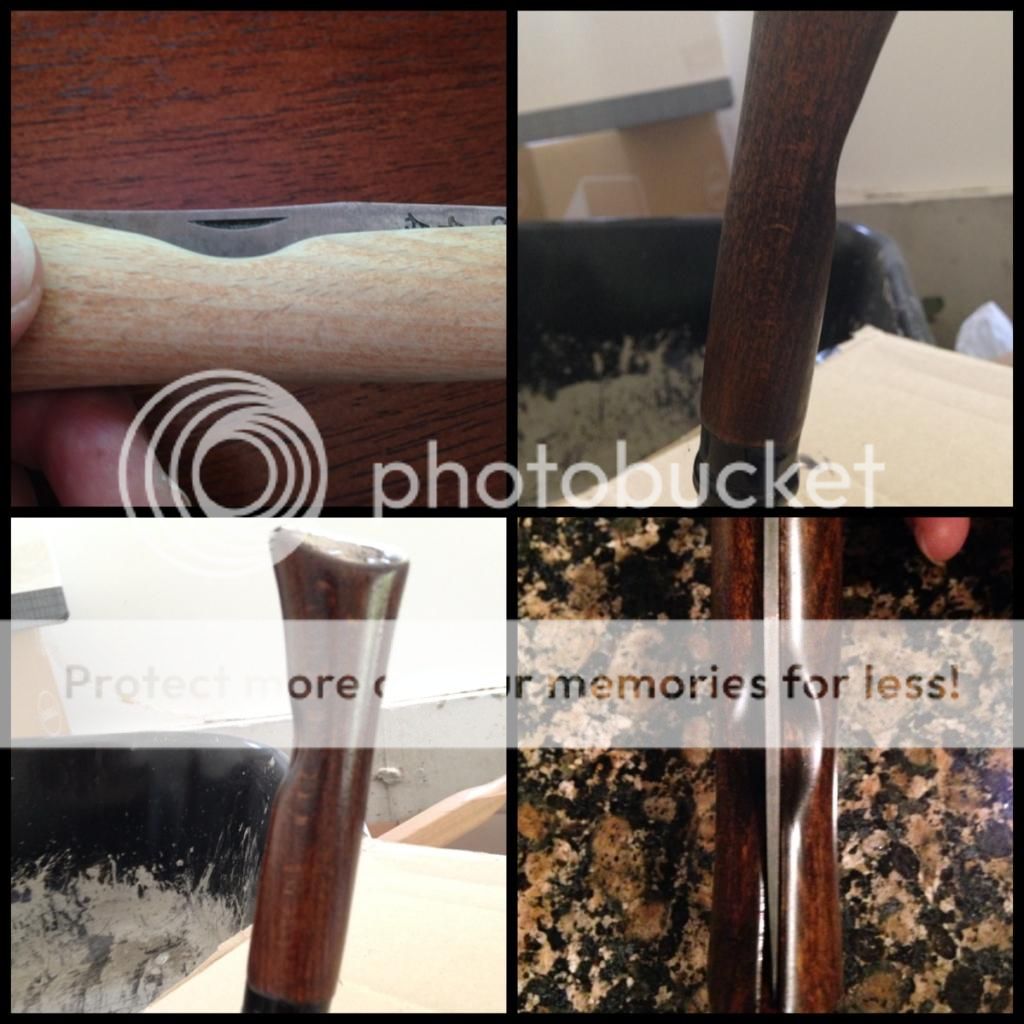If you're staining an Opie's handle, learn to love variability.
These three got the same treatment at the same time. Top to bottom, a #9 in carbon bought a couple years ago, a #8 garden in stainless (ditto), a #6 in carbon bought in the middle 90s (note the earlier blade stamp).
I sanded the handles thoroughly with 180 grit to remove the varnish and rough up the wood surface. Wiped them down with a damp cloth to get the sanding dust off. Then —
• mixed up a batch of Rit cocoa brown clothing dye with hot water in a mason jar
• opened the knives and dunked the handles into the dye up to the lock ring
• you hold them in place with a binder clip on the blade
• I forget how long they stayed in the dye but it was about two minutes
• remove the knives and put one each in a glass container to dry and harden the dye
• be careful not to splash the dye around — it really stains!
• I then rinsed the handles off under cold running water (removes excess caked dye from the surface)
• let dry again in glass containers
At this point, you choose your finish — I used a semi-gloss urethane with four or five coats wiped on with a cloth and let dry between each coat (this may take a day or two — but wait for it).
Now it's obvious the handles responded differently, although they are all beechwood. The #6 had been used and carried around a fair bit for several years, so I wasn't surprised when it took the dye less deeply than the new #9. (Absorbed oils probably.) The #8's lightness was surprising however.
But perhaps it shouldn't be surprising as I have no way to calibrate the degree of sanding & dyeing each got nor the ability of the wood to open its grain and take the dye. So therefore same grit, fresh paper for each, same effort, same length of time in the same batch at the same temperature = different results.
Well, all I can say is — this is craftsmanship, not physics. And since each is a one-off item not a commercial product for sale, I'm totally content.






